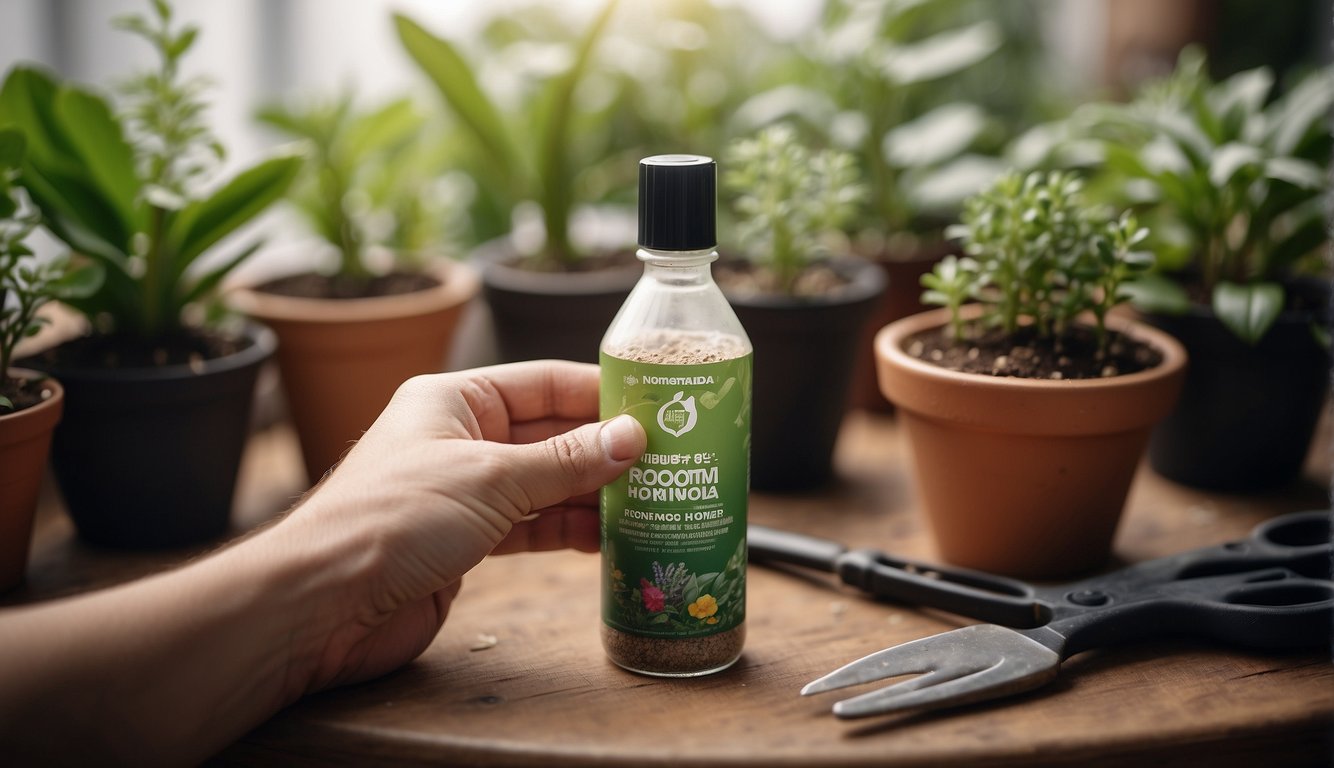TheHerbProf.com is a treasure trove of knowledge for those interested in natural healing and herbal remedies. The website is run by Paul Johnston MD. A naturopathic who has not only received extensive education in the field but also has personal experience in self-healing.
Can You Compost Avocado Pits? Composting is a great way to reduce waste and create nutrient-rich soil for your plants. However, not all waste can be composted. One question that often comes up is whether avocado pits can be composted. As someone who has been composting for years, I can confidently say that avocado pits can indeed be composted.
Avocado pits are a bit tougher to break down than other compostable materials, but with a bit of preparation, they can be turned into rich soil. One method involves crushing the pits into smaller pieces before adding them to your compost pile. Alternatively, you can soak the pits in water for a few days to soften them up before adding them to your compost. It’s important to note that avocado pits should not be added to your compost in their whole state, as they can take a long time to break down and may attract pests.
Overall, composting avocado pits is a great way to reduce waste and create healthy soil for your plants. With a bit of preparation and patience, you can turn your avocado pits into nutrient-rich compost that will help your plants thrive.
Understanding Composting Basics
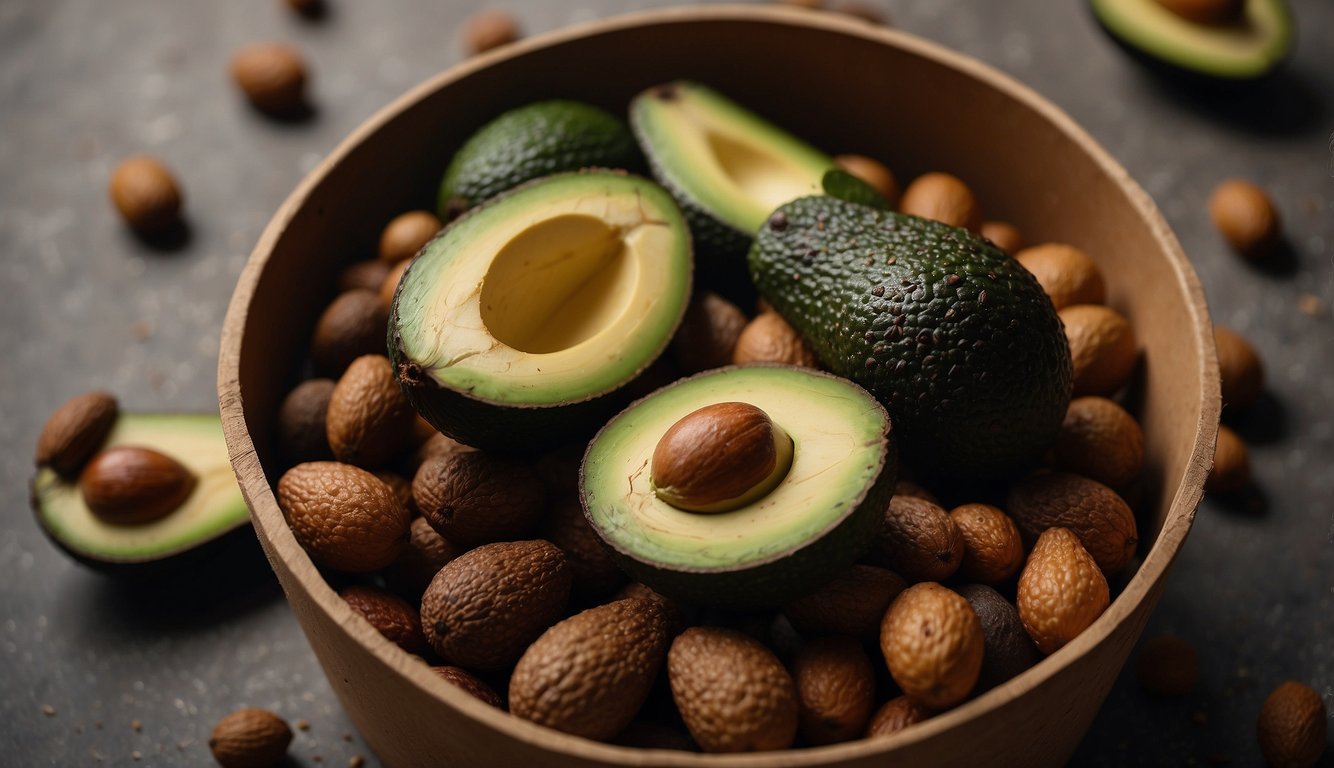
What Is Composting?
Composting is a natural process that breaks down organic matter into a nutrient-rich soil amendment that can be used to improve soil health and plant growth. This process is achieved through the activity of microorganisms, such as bacteria and fungi, that break down the organic matter into simpler compounds.
The Role of Microorganisms in Decomposition
Microorganisms play a crucial role in the composting process by breaking down the organic matter into simpler compounds. Bacteria, for example, break down the carbon-rich materials, while fungi break down the nitrogen-rich materials. These microorganisms require oxygen, moisture, and a proper balance of carbon and nitrogen to thrive and carry out their work.
Balancing Green and Brown Materials
To create a successful compost pile, it is important to have a good balance of green and brown materials. Green materials, such as food scraps and grass clippings, are high in nitrogen and provide the microorganisms with the nutrients they need to thrive. Brown materials, such as dried leaves and twigs, are high in carbon and provide the necessary structure for the compost pile.
It is important to maintain the right moisture level in the compost pile, as too much or too little moisture can affect the activity of the microorganisms. The ideal moisture level is around 50-60%. Additionally, the compost pile needs to be turned regularly to ensure that oxygen is evenly distributed throughout the pile.
By understanding these basic principles of composting, you can create a healthy and productive compost pile that will help you reduce waste and improve the health of your soil.
Prepping Avocado Pits for Composting
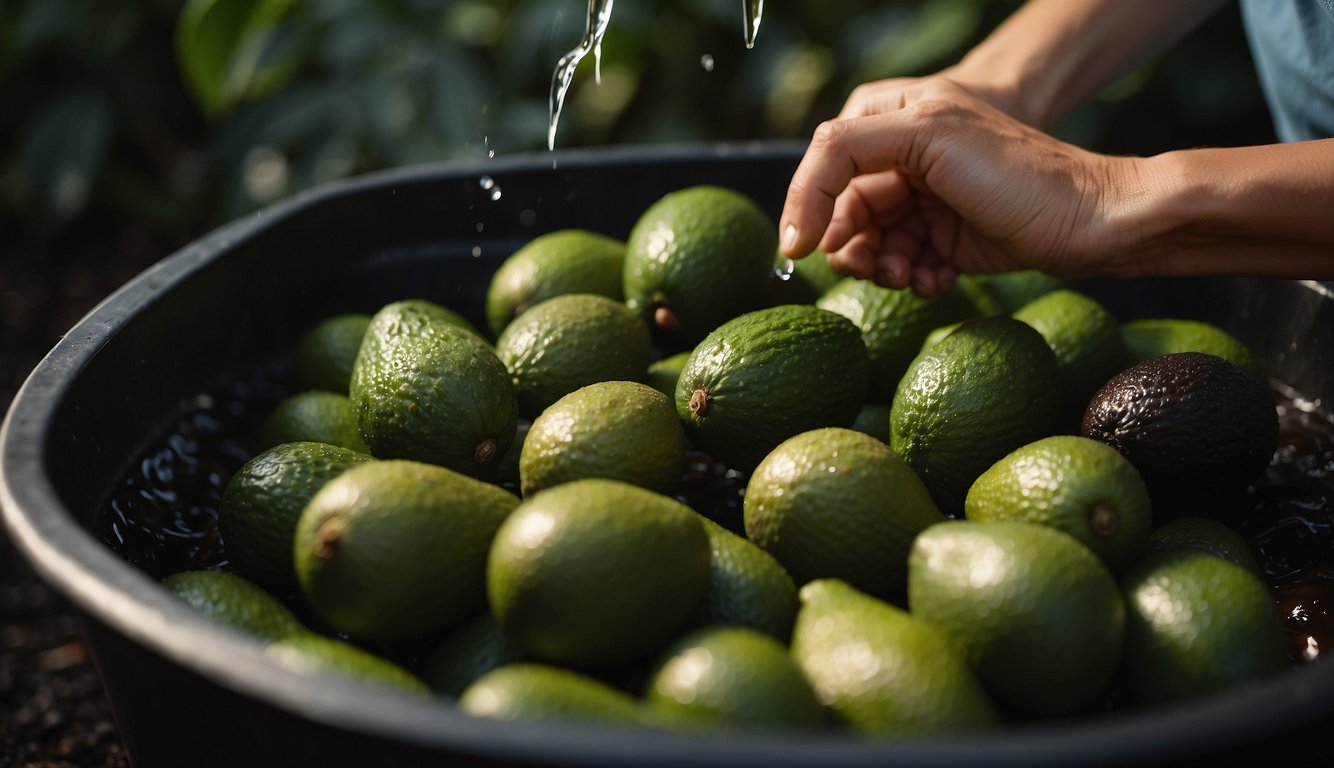
When it comes to composting avocado pits, it’s important to prepare them properly to ensure they break down efficiently. Here are a few tips on how to prep avocado pits for composting.
Cutting and Chopping Avocado Pits
One of the best ways to prep avocado pits for composting is to cut them into smaller pieces. This will help to increase the surface area of the pits, which will speed up the decomposition process. You can use a knife or a pair of scissors to cut the pits into smaller pieces. Alternatively, you can use a food processor or a blender to chop the pits into small pieces.
Increasing Surface Area for Faster Decomposition
Another way to increase the surface area of avocado pits is to smash them with a hammer. This will help to break the pits into smaller pieces and increase the surface area, which will speed up the decomposition process. You can also use a mortar and pestle to grind the pits into a fine powder, which will also increase the surface area and speed up the decomposition process.
Once you have prepped your avocado pits for composting, you can add them to your compost pile. It’s important to balance the carbon-to-nitrogen ratio in your compost pile by adding both brown materials (such as leaves and twigs) and green materials (such as fruit and vegetable scraps). You should also make sure that your compost pile stays moist, but not too wet, and that it is turned regularly to ensure that the materials are breaking down evenly.
In summary, cutting, chopping, and smashing avocado pits are all effective ways to increase the surface area of the pits and speed up the decomposition process. By prepping your avocado pits properly and adding them to your compost pile, you can help to reduce waste and create nutrient-rich soil for your garden.
Optimizing Your Compost Pile
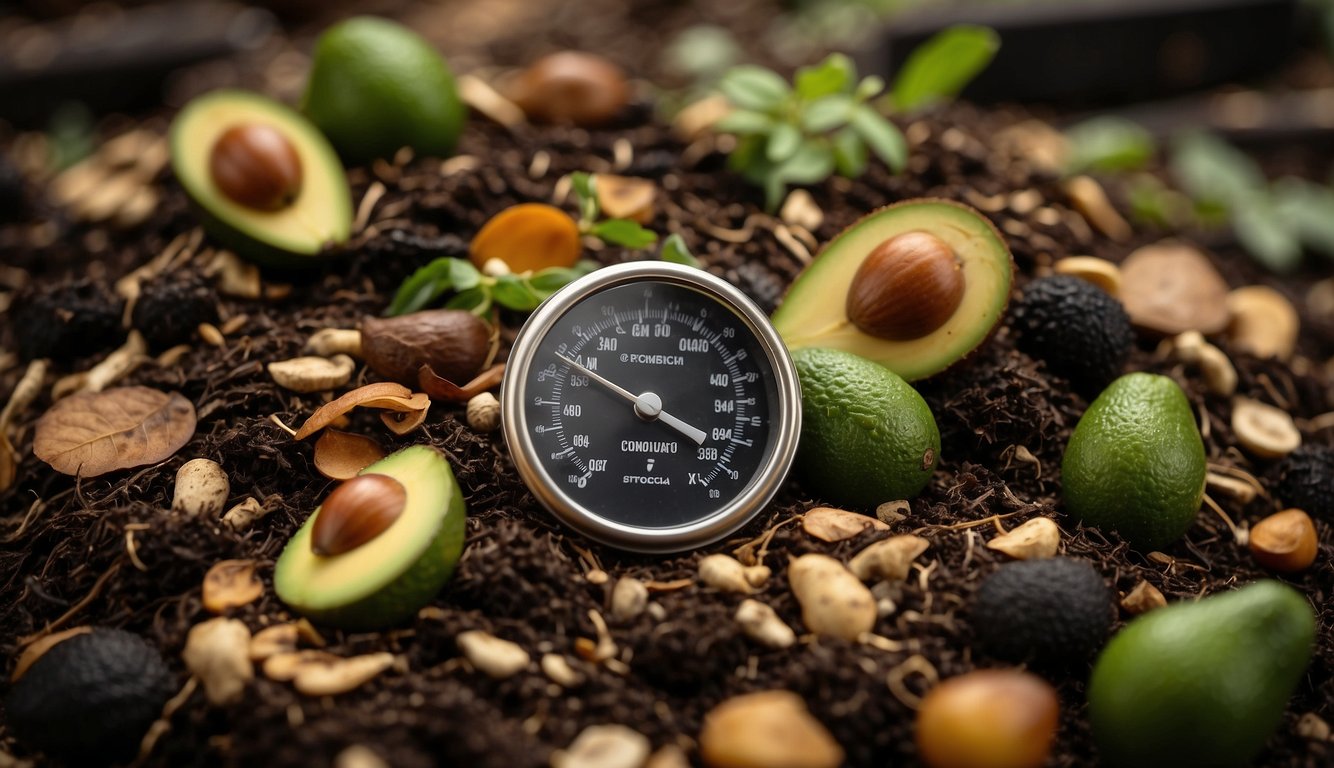
As I mentioned earlier, avocado pits are a great addition to your compost pile. However, to ensure that your compost pile is working effectively, you need to maintain proper moisture levels, ensure adequate airflow and aeration, and turn the compost regularly.
Maintaining Proper Moisture Levels
One of the most important factors in composting is maintaining proper moisture levels. If the pile is too dry, it will not decompose properly, and if it is too wet, it will become anaerobic and start to smell. Ideally, the compost pile should be moist, but not soaking wet. I recommend aiming for a moisture level of around 50-60%.
Ensuring Adequate Airflow and Aeration
Another important factor in composting is ensuring adequate airflow and aeration. The microorganisms that break down the organic matter in the compost pile need oxygen to survive. If the pile is too compacted or doesn’t have enough air, the microorganisms will die off, and the compost pile will stop decomposing. To ensure adequate airflow and aeration, I recommend turning the compost pile regularly.
Turning the Compost
Turning the compost pile is essential for ensuring that the organic matter is decomposing evenly. When you turn the pile, you are mixing the outer layers with the inner layers, which helps to ensure that all of the organic matter is breaking down at the same rate. Turning the compost pile also helps to ensure adequate airflow and aeration, as it helps to loosen up the pile and allows oxygen to penetrate the compost.
In summary, to optimize your compost pile, you need to maintain proper moisture levels, ensure adequate airflow and aeration, and turn the compost regularly. By doing so, you will ensure that your compost pile is working effectively and that your avocado pits (and other organic matter) are breaking down properly.
Benefits of Composting Avocado Pits

As an avid gardener, I have always been interested in finding ways to enrich the soil in my garden. Recently, I discovered that composting avocado pits is an excellent way to do just that. In this section, I will share with you the benefits of composting avocado pits.
Nutrient-Rich Soil Amendment
Avocado pits are rich in nutrients such as calcium, magnesium, and potassium. When composted, these nutrients are released into the soil, creating a nutrient-rich soil amendment that can help improve soil health and promote plant growth. Additionally, composting avocado pits can help increase the soil’s water-holding capacity, which can be especially beneficial in dry climates.
Reducing Kitchen and Yard Waste
Composting avocado pits is an excellent way to reduce kitchen and yard waste. Instead of throwing away avocado pits, you can compost them along with other kitchen scraps and yard waste. This reduces the amount of waste that ends up in landfills, which can help reduce greenhouse gas emissions and protect the environment.
Supporting Sustainable Gardening Practices
Composting avocado pits is a sustainable gardening practice that supports the environment. By composting avocado pits, you are reducing waste, promoting healthy soil, and supporting sustainable gardening practices. This can help reduce your carbon footprint and contribute to a healthier planet.
Composting avocado pits is an excellent way to create a nutrient-rich soil amendment, reduce kitchen and yard waste, and support sustainable gardening practices. If you are interested in composting avocado pits, be sure to break them into smaller pieces and mix them with other kitchen scraps and yard waste. With a little effort, you can create a nutrient-rich soil amendment that will help your plants thrive.
Integrating Avocado Pits into Various Composting Methods
When it comes to composting avocado pits, there are several methods you can use. In this section, I will explore three popular methods for composting avocado pits: traditional composting, vermicomposting with worms, and hot and cold composting techniques.
Traditional Composting
Traditional composting is a simple and effective method for composting avocado pits. To get started, simply add the pits to your compost pile along with other organic materials, such as kitchen scraps, yard waste, and leaves. Make sure to chop the avocado pits into smaller pieces to help speed up the decomposition process.
When composting avocado pits, it’s important to maintain a proper carbon-to-nitrogen ratio. Avocado pits are high in carbon, so be sure to balance them out with nitrogen-rich materials, such as grass clippings or vegetable scraps. Also, make sure to keep your compost pile moist and turn it regularly to ensure proper aeration.
Vermicomposting with Worms
Another method for composting avocado pits is vermicomposting with worms. Worms can help break down the avocado pits more quickly and efficiently, and their castings make excellent fertilizer for your garden.
To get started with vermicomposting, you’ll need a worm bin. Add the avocado pits to the bin along with other organic materials, such as shredded newspaper or cardboard. Make sure to chop the avocado pits into smaller pieces to help the worms break them down more easily.
When vermicomposting with worms, it’s important to maintain a proper moisture level and avoid overfeeding your worms. Too much food can lead to an unpleasant odor and attract pests.
Hot and Cold Composting Techniques
Finally, you can also use hot and cold composting techniques to compost avocado pits. Hot composting involves creating a pile of organic materials that heats up as it decomposes, while cold composting involves allowing the materials to decompose naturally over time.
To hot compost avocado pits, add them to a pile of organic materials and turn the pile regularly to ensure proper aeration. The heat generated by the decomposition process will help break down the avocado pits more quickly.
To cold compost avocado pits, simply add them to a pile of organic materials and allow them to decompose naturally over time. This method is slower than hot composting but requires less effort.
There are several methods for composting avocado pits, including traditional composting, vermicomposting with worms, and hot and cold composting techniques. By integrating avocado pits into your composting routine, you can help reduce waste and create nutrient-rich fertilizer for your garden.
Common Challenges and Solutions
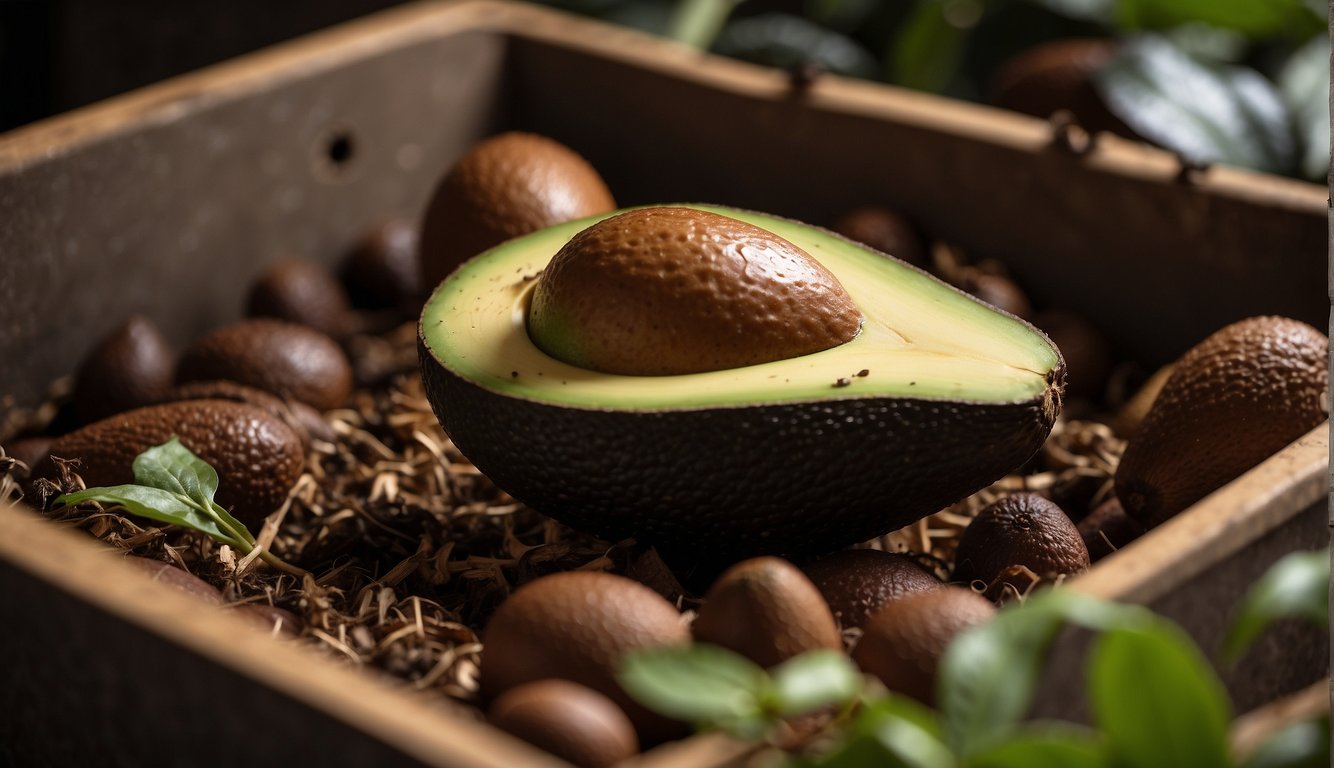
Dealing with Slow Decomposition
Avocado pits are notoriously slow to decompose, which can be a challenge when composting. However, there are a few solutions that can help speed up the process. First, it’s important to crush or grind the pits before adding them to your compost pile. This will help break them down and expose more surface area to the composting process. Additionally, adding high-nitrogen materials like grass clippings or manure can help balance the carbon-to-nitrogen ratio and speed up decomposition. Finally, turning your compost pile regularly can help aerate it and promote decomposition.
Managing Pests and Odors
Composting avocado pits can also attract pests like rodents and flies, which can be a nuisance. To prevent this, it’s important to bury the pits deep within the compost pile and cover them with other materials like leaves or straw. This will help mask any odors and prevent pests from being attracted to the pile. Additionally, avoiding adding any meat, dairy, or oily foods to your compost pile can also help prevent odors and pests.
Maintaining the Carbon-to-Nitrogen Ratio
Maintaining the proper carbon-to-nitrogen ratio is crucial to successful composting, and avocado pits can be a valuable source of carbon. However, they are also high in lignin, which can make them more difficult to break down. To balance this, it’s important to add high-nitrogen materials like grass clippings or manure to your compost pile. This will help provide the necessary balance of carbon and nitrogen for successful composting. Additionally, turning your compost pile regularly can help mix the materials and promote decomposition.
Overall, composting avocado pits can be a great way to reduce waste and enrich your soil. However, it’s important to be mindful of the challenges that can arise and take steps to address them. By following these tips, you can successfully compost avocado pits and create nutrient-rich compost for your garden.
Before You Go – Can You Compost Avocado Pits?
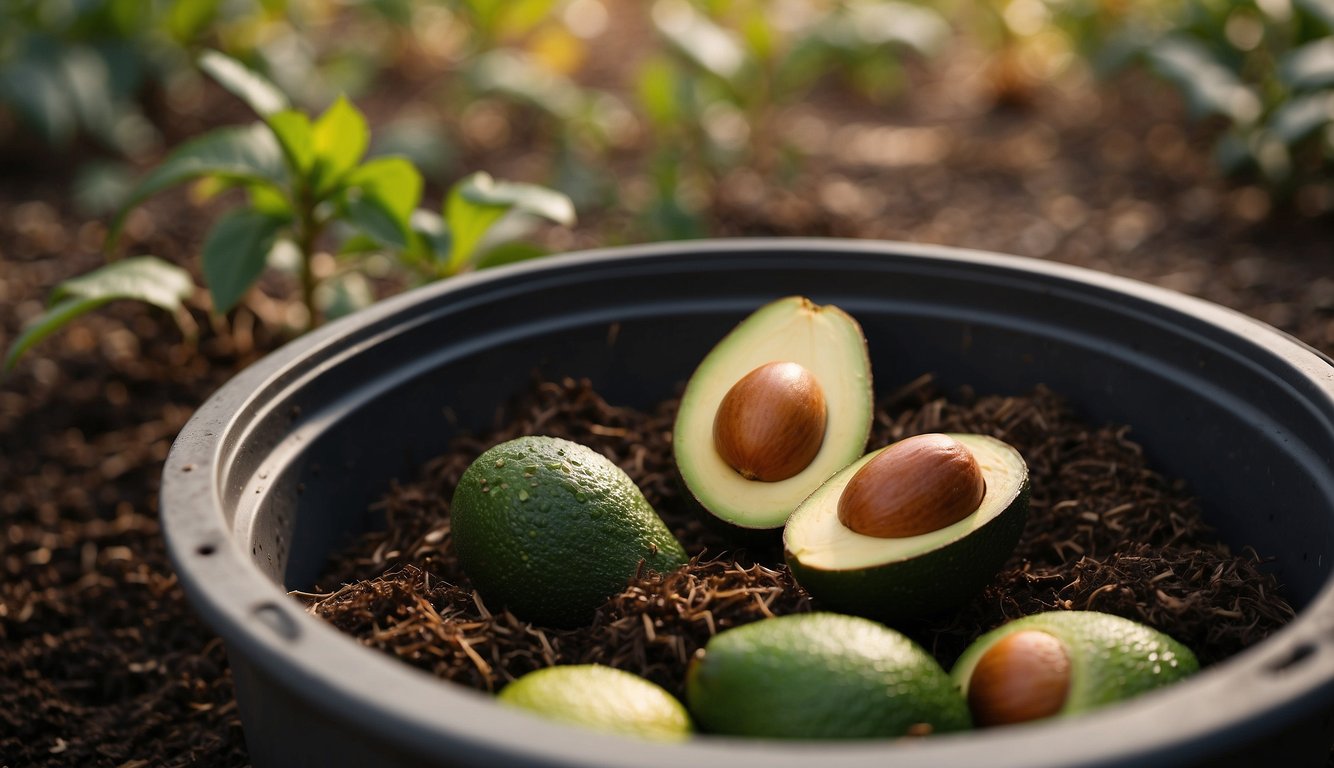
Composting avocado pits is a great way to reduce waste and enrich your garden soil. However, it is important to follow best practices to ensure that the pits break down properly and do not attract pests.
To effectively compost avocado pits, it is recommended to break them into smaller pieces before adding them to your compost pile. This will help expedite the decomposition process and ensure that the pits break down completely.
Additionally, it is important to mix avocado pits with a balanced combination of greens (like kitchen scraps) and browns (such as leaves) for optimal composting. This will help create a healthy compost pile that is rich in nutrients and organic matter.
When composting avocado pits, it is also important to monitor the pile for any signs of pests or odors. If you notice any issues, it may be necessary to adjust the compost pile to prevent further problems.
Overall, composting avocado pits is a great way to reduce waste and improve the health of your garden soil. By following best practices and monitoring the compost pile, you can create a healthy and sustainable composting system that benefits both your garden and the environment.
Rooting for Success: Best Rooting Hormone Powder
Today, we’re digging into the root of plant propagation: the best rooting hormone powder!
Now, rooting hormone powder is like magic dust for plant cuttings. It encourages root growth and helps your cuttings establish faster. It’s like giving your cuttings a head start!
But here’s the kicker. Not all rooting hormone powders are created equal. Some are stronger, some are gentler. It’s all about finding the right fit for your plants!
And remember, less is more. A little rooting hormone powder goes a long way. It’s all about the right dosage!
So, if you’re ready to delve deeper into the world of plant propagation, head over to theherbprof.com. It’s packed with tips and tricks for all your gardening needs.
Remember, folks, every plant starts with a root. So, let’s keep rooting, keep growing, and keep laughing. Happy gardening!
References – Can You Compost Avocado Pits?
Little Herb Encyclopedia, by Jack Ritchason; N.D., Woodland Publishing Incorporated, 1995
The Ultimate Healing System, Course Manual, Copyright 1985, Don Lepore
Planetary Herbology, Michael Tierra, C.A., N.D., Lotus Press, 1988
Handbook of Medicinal Herbs, by James A. Duke, Pub. CRP Second Edition 2007
The Complete Medicinal Herbal, by Penelope Ody, Published by Dorling Kindersley
Check the Following Articles!
Grow Thyme from Cuttings: Simple Propagating Plants
Can You Grow Onions in 5 Gallon Buckets?
Best Rooting Hormone Powder: Plant Propagation Top Picks
Frequently Asked Questions – Can You Compost Avocado Pits?
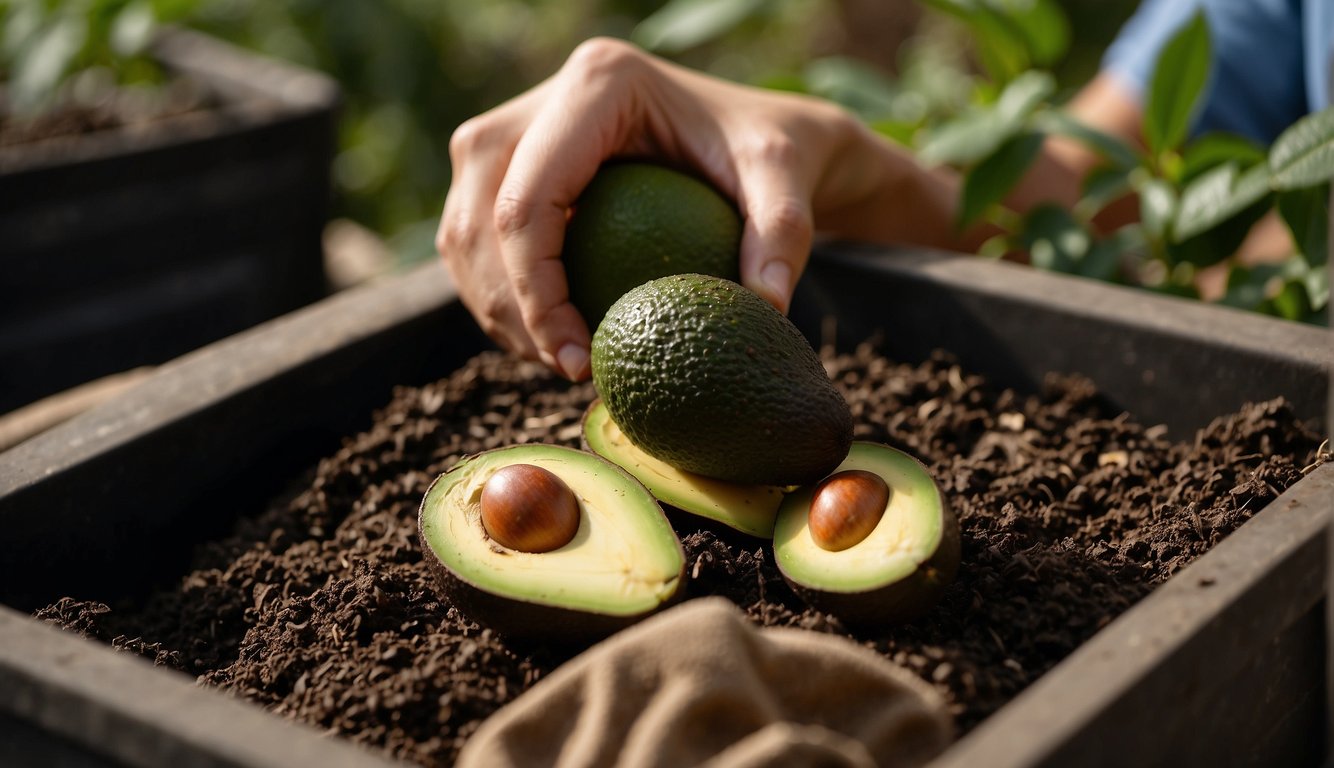
How long does it take for avocado pits to decompose in compost?
Avocado pits can take anywhere from six months to two years to decompose in compost, depending on various factors like temperature, moisture, and the size of the pit. However, breaking the pit into smaller pieces can speed up the decomposition process.
Are there any special requirements for composting avocado pits?
Composting avocado pits doesn’t require any special requirements. However, it’s important to mix the pits with other compostable materials like leaves, grass clippings, and kitchen scraps to balance the carbon-to-nitrogen ratio. Additionally, it’s best to keep the compost pile moist and aerated to help the decomposition process.
What are the benefits of adding avocado pits to your compost?
Avocado pits are rich in nutrients like calcium, magnesium, and potassium, which are essential for plant growth. Adding avocado pits to your compost can help create nutrient-rich soil that can improve the health and yield of your plants.
Can avocado pits be composted whole, or should they be broken down first?
It’s best to break down avocado pits into smaller pieces before adding them to your compost pile. This can help speed up the decomposition process and ensure that the pits are fully broken down by the time you use the compost.
What other fruit pits are similar to avocado pits in terms of composting?
Other fruit pits that are similar to avocado pits in terms of composting include peach, plum, and cherry pits. Like avocado pits, these pits are slow to decompose and should be broken down into smaller pieces before adding them to your compost pile.
Are there any common composting mistakes to avoid with avocado pits?
One common mistake when composting avocado pits is adding too many at once. This can slow down the decomposition process and create a blockage in your compost pile. It’s best to add avocado pits in moderation and mix them with other compostable materials to ensure a balanced compost pile. Additionally, avoid adding any avocado pits that have been treated with pesticides or other chemicals, as these can harm your compost and plants.
